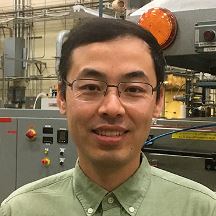Get in touch with our technical experts.
Let us help you optimize and monitor your operation with gas density sensors.

Let us help you optimize and monitor your operation with gas density sensors.

Advanced Materials Processing R&D Engineer, North America
The simplest nonreactive atmosphere for thermal processing of a metal or material is a pure inert gas or vacuum, yet neither offers protection against trace impurities such as oxygen, water, and carbon dioxide, which are almost invariably present in the heat treating furnace atmosphere.
The problem of trace impurities is exacerbated as the temperature increases. Depending on the process and material, even small variations in the temperature or impurity level can shift a reducing or neutral atmosphere to an oxidizing one, with a negative impact on the quality of the treated parts.
To counteract the temperature effect, reactive species (H2 and CxHy) can be added to scavenge impurities and maintain the required potential for the material being processed. Control systems have gained increasing acceptance to regulate the amount of reactive species added. However, ensuring proper control is not simply a matter of installing elaborate equipment; it also requires accurate knowledge of which variables must be controlled and how close the control must be in any given case.
